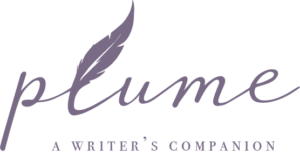Banning Books
If you are even a casual bibliophile, you’ve likely heard that it’s Banned Books Week. Whenever I hear about banned books, I think how and why? Isn’t the purpose of books to open our eyes to new ideas and perspectives? Surely this is a good thing, right?
Well, not according to those who wish to censor certain titles they find offensive, it isn’t. When books are challenged or outright banned it’s almost always literature meant for or read by children and young adults (but this is not true in every case). So what is it that people are trying to shield young people from?
Top Banned Books
Let’s take a closer look at what books are often banned and for what ostensible reasons. In 2017, the top banned books* were:
- Thirteen Reasons Why by Jay Asher
- The Absolutely True Diary of a Part-Time Indian by Sherman Alexie
- Drama written and illustrated by Raina Telgemeier
- The Kite Runner by Khaled Hosseini
- George written by Alex Gino
- Sex is a Funny Word written by Cory Silverberg and illustrated by Fiona Smyth
- To Kill a Mockingbird by Harper Lee
- The Hate U Give by Angie Thomas
- And Tango Makes Three written by Peter Parnell and Justin Richardson and illustrated by Henry Cole
- I Am Jazz written by Jessica Herthel and Jazz Jennings and illustrated by Shelagh McNicholas
*There are a couple titles on this list that I do find problematic, but more so for recent revelations about the writers’ treatment of women. Another time, another post…
Most of these titles are indeed considered children’s or YA literature. The stated reasons for banning them? Profane language; frank discussion of sexuality, gender identity, and LGBTQ issues; promoting terrorism; and drug use. But I have to wonder a) Does depicting terrorism or drug use or sexuality lead young people on a direct path to these activities? and b) Does “banning” these books, or making them harder for young people to get their hands on them, really keep them from seeking out these or similar titles?
Parents are within their rights to guide their children’s reading choices, but this becomes problematic as their children age, and also when these parents, educators, and even other young people overreach and try to censor what other children in the community can easily access. One case I often return to is that of Alison Bechdel’s graphic novel, Fun Home (admittedly, a favorite of mine). This book is an autobiographical exploration of Bechdel coming out as a lesbian, while simultaneously trying to make sense of her gay father’s repression and subsequent suicide. But in 2006, a Missouri town called it “pornography” and it was removed from the library system for a time. In 2013, the College of Charleston added it to the freshman reading list and people were so aghast at this that they protested, and the state legislature slashed the school’s budget, in the exact amount of the reading program. Hmm. (You can read more about Fun Home and its challenges here).
No Publicity Is Bad Publicity
Frankly, I think banning books is a futile endeavor, one that just drives up sales and demand for said banned books. Sometimes it’s hard to know what came first, the chicken or the egg, a.k.a. the book’s popularity or it’s often-banned status. Consider some of the most popular banned titles:
To Kill a Mockingbird
Harry Potter and the Sorcerer’s Stone
The Handmaid’s Tale*
The Great Gatsby
I Know Why the Caged Bird Sings
In Cold Blood
Fahrenheit 451*
*You have to laugh at the irony here. In The Handmaid’s Tale, women are literally prohibited from reading, and in Fahrenheit 451 depicts a United States in which books have been outlawed altogether.
I love that some of these books continue to grow in popularity even as sometimes many decades have passed since their publication. How do people who spend their time challenging and banning books really hope to cut others off from these literary juggernauts?

Though the judges remain out, I think that blocking access to books ends up backfiring and increasing their popularity in the long run. I like to imagine kids secretly buying or checking out these books, hiding them under their mattresses, and reading them under the covers late at night when their parents are sleeping.
Book rebels, young and old, we are here for it!
What is your all-time favorite banned book? What do you make of the case for it being banned or challenged? Let us know here or on Twitter, Instagram, and/or Facebook. Happy illicit reading!

